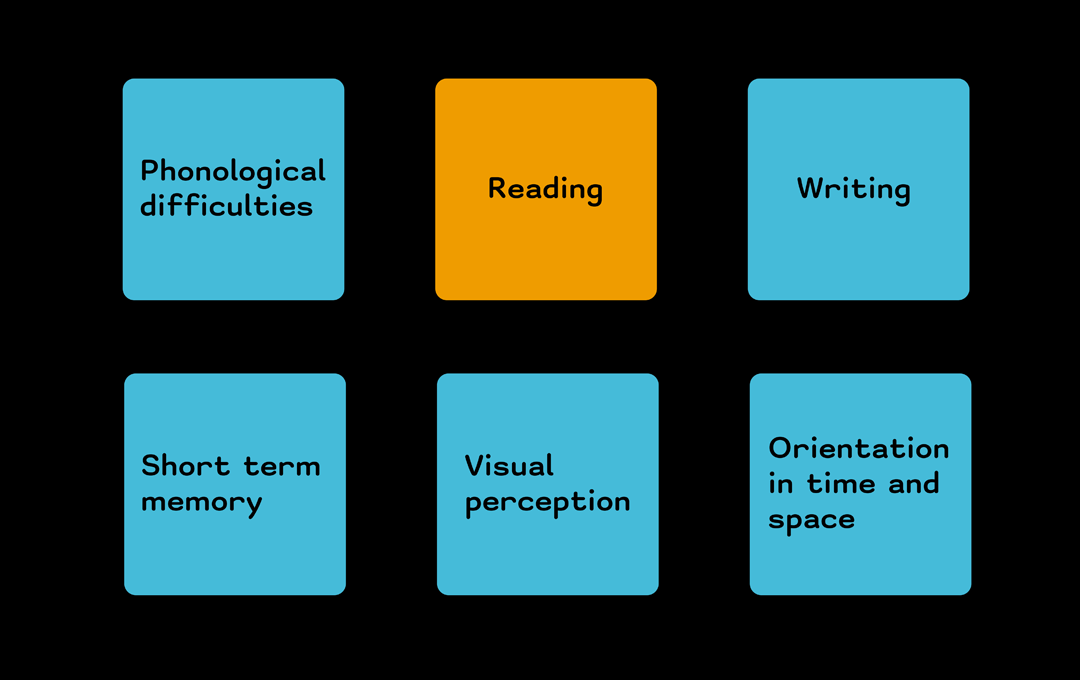Dyslexia Basics
Understanding Dyslexia and Its Characteristics

Understanding dyslexia basics and its characteristics are highly relevant for all parents and teachers who work with dyslexic kids. It is important to be able to detect issues early on and to support them successfully.
For most of us, reading is something we do easily. So, how come there are some very bright children and adults who struggle to read? Parents and teachers of children with dyslexia often ask this question.
Dyslexia is an unexpected difficulty in reading because it excludes intellectual disability and sensory impairments. Also, children with dyslexia receive appropriate reading instructions like all the children. But they still have trouble with reading. How come?
How Dyslexic Brain Works?
Dyslexia was first recognized in 1886. by a medical doctor in England. He called it “word blindness”. From then on, reading and dyslexia are a big topic in scientific research. With advances in tools in modern neuroscience, we know how the reading network works in the brain. Our brains aren’t wired for reading so we don’t have a reading center in the brain.
Some parts of the brain have to specialize in reading.
Also, a circuit that connects these parts has to be created. To read, the circuit needs to run fast and automatically. In dyslexia, there are some differences in these connections. Because of that, we say that dyslexia has a neurobiological origin. We still don’t know the cause of dyslexia. We know that it can run in the families so we believe that there is the genetic background.
Areas All Dyslexics Have Problems In
Learning to read requires many skills including developing an awareness that spoken language can be broken into smaller parts (syllables and phonemes), identifying letters, learning the rules of how print maps onto sound, recognizing whole words accurately and rapidly, acquiring vocabulary and meaning.
Dyslexics have problems with all these steps. There are many manifestations of dyslexia but all have problems in these areas:
Phoneme Awareness
Fluency
Comprehension
Phoneme Awareness
It is a specific ability that focuses on phonemes and manipulation on phonemes in spoken words. This skill is very important because it is a foundation for spelling and word recognition. To some children, this skill comes naturally and some need structured instruction. This is one of the best predictors of future reading.
Reading
A critical step of learning how to read is mapping the letters into their sound. This process is called “decoding” and it is considered to be a core problem of dyslexia.
Fluency
When decoding of words is automatic, reading is easy and fluent. In dyslexia, children and adults can’t read quickly and automatically. Their reading is effortful and slow.
Comprehension
When children start reading, they spend a lot of mental energy on decoding letters into words. So sometimes it is hard for them to remember what they have read. That is a big problem because in school we all have to be able to read so we could learn. That problem exists throughout the entire education.
Detect Dyslexia Early and Practice Reading
For children with dyslexia, it is necessary to detect their problems early and include them in support programs. Also, it is important to teach parents and teachers how to better understand dyslexia basics and dyslexics. Then, they can support children to be more successful in the educational process and life.
There are no solutions that will fit all dyslexics because there are many manifestations of the problem. Don’t give up on reading with dyslexic kids! Practice reading books with topics they like. And remember – reading is like riding a bike. If you don’t practice, you can’t be better.